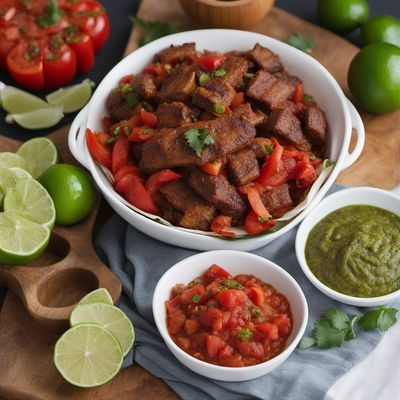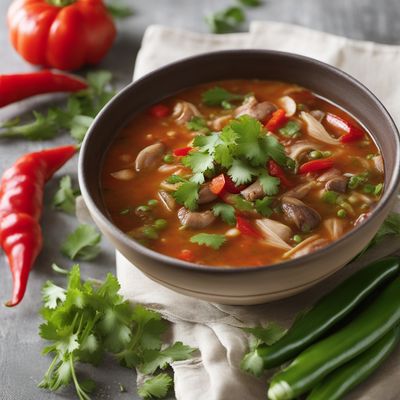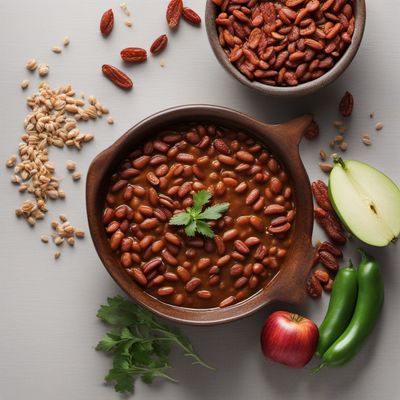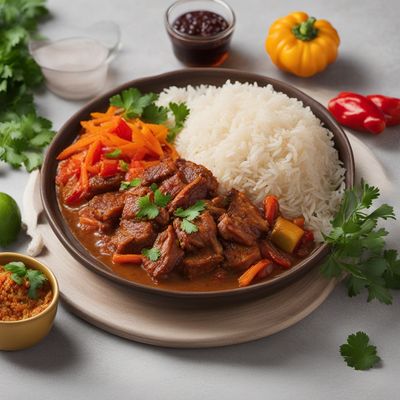
Ingredient
Devil rattan hearts
The Fiery Delicacy
Devil rattan hearts are a delicacy with a fiery flavor and a tender yet crunchy texture. They are often used in Asian cuisines, particularly in dishes that require a spicy kick. With their vibrant red color and intense taste, devil rattan hearts bring a unique element to stir-fries, soups, and salads.
Origins and history
Devil rattan hearts, also known as devil's tongue or konjac, have their origins in East Asia, particularly in Japan, China, and Korea. They have been used in traditional Asian cuisines for centuries, prized for their unique texture and ability to absorb flavors. Devil rattan hearts are often associated with hot and spicy dishes, as they can withstand high heat and retain their firmness.
Nutritional information
Devil rattan hearts are low in calories and carbohydrates, making them a suitable choice for those following a low-calorie or low-carb diet. They are also a good source of dietary fiber, providing a feeling of fullness and aiding in digestion.
Allergens
Devil rattan hearts may cause allergic reactions in individuals with sensitivities to konjac or glucomannan. It is important to exercise caution and consult with a healthcare professional if you have any known allergies or sensitivities.
How to select
When selecting devil rattan hearts, look for fresh hearts that are firm and have a vibrant red color. Avoid hearts that are discolored, slimy, or have a foul odor. Devil rattan hearts are often available in Asian grocery stores or specialty food markets, either fresh or in packaged form.
Storage recommendations
To maintain the freshness of devil rattan hearts, store them in a cool and dry place. If purchasing fresh hearts, consume them within a few days. Packaged devil rattan hearts can be stored for a longer period, but it is recommended to check the expiration date and consume them before that.
How to produce
Devil rattan hearts are typically produced commercially and require specialized processing. It is not feasible for amateurs to grow or produce devil rattan hearts at home.
Preparation tips
Devil rattan hearts need to be properly prepared before use. They should be rinsed thoroughly to remove any excess starch and then boiled or blanched to soften their texture. Once cooked, they can be stir-fried, added to soups, or used in salads. Devil rattan hearts are often paired with spicy sauces, garlic, ginger, and other bold flavors.
Culinary uses
Devil rattan hearts are commonly used in Asian cuisines, particularly in dishes from Japan, China, and Korea. They are often found in stir-fries, hot pots, soups, and salads that require a spicy kick. Devil rattan hearts are also used as a vegetarian substitute for seafood in dishes like sushi rolls or sashimi.
Availability
Devil rattan hearts are commonly available in Asian countries like Japan, China, and Korea. They can also be found in Asian grocery stores or specialty food markets in other parts of the world.
More ingredients from this category
Recipes using Devil rattan hearts

Chugchucaras Guatemaltecas
Savory Guatemalan Chugchucaras: A Flavorful Delight

Luganega-inspired Kimchi Sausage Stew
Savory Kimchi Sausage Stew with a Lombardian Twist

Central American Hot and Sour Soup
Spicy and Tangy Central American Soup Delight

Chinese Indonesian-style Stuffed Meatloaf with Mushrooms
Savory Mushroom-Stuffed Meatloaf: A Chinese Indonesian Delight

Singaporean Style Crispy Duck Rice
Crispy Delights: Singaporean Style Duck Rice

Vanuatuan Coconut Curry Noodle Soup
Tropical Delight: Vanuatuan Coconut Curry Noodle Soup

Cowboy Beans with a Twist
Smoky and Spicy Cowboy Beans: A Flavorful Twist on a Classic American Dish

Crispy Pork Knuckles with Tropical Twist
Island Delight: Crispy Pork Knuckles with a Taste of the Sea

Slovenian Jota Soup
Hearty Jota: A Taste of Slovenian Comfort

Szpajza - Hungarian Potato and Sausage Stew
Hearty Hungarian Comfort: Szpajza - A Flavorful Potato and Sausage Stew

Caspian Pork Stew with Rice
Savory Caspian Pork Delight